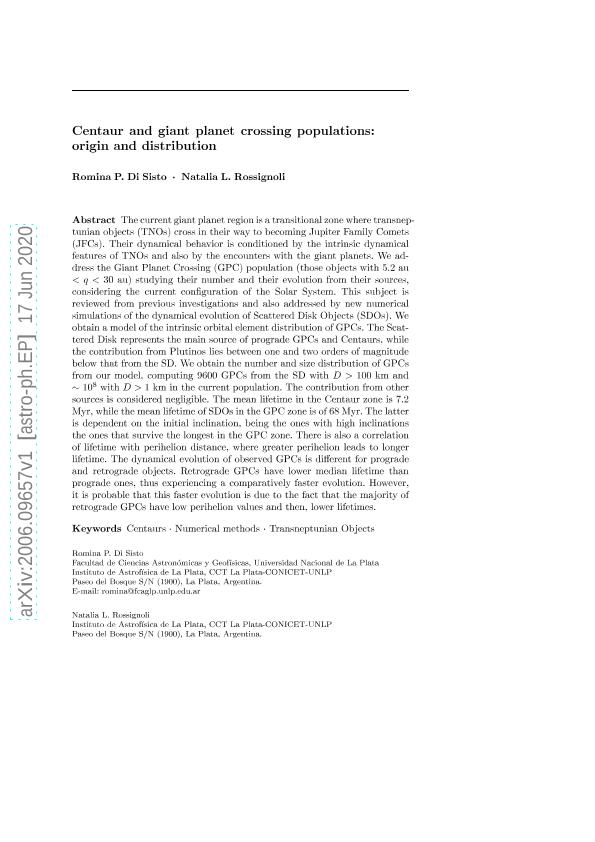Artículo
Centaur and giant planet crossing populations: origin and distribution
Fecha de publicación:
07/2020
Editorial:
Springer
Revista:
Celestial Mechanics & Dynamical Astronomy
ISSN:
0923-2958
Idioma:
Inglés
Tipo de recurso:
Artículo publicado
Clasificación temática:
Resumen
The current giant planet region is a transitional zone where transneptunian objects (TNOs) cross in their way to becoming Jupiter Family Comets. Their dynamical behavior is conditioned by the intrinsic dynamical features of TNOs and also by the encounters with the giant planets. We address the Giant Planet Crossing (GPC) population (those objects with 5.2 au 100km and ∼ 10 8 with D>1km in the current population. The contribution from other sources is considered negligible. The mean lifetime in the Centaur zone is 7.2 Myr, while the mean lifetime of SDOs in the GPC zone is of 68 Myr. The latter is dependent on the initial inclination, being the ones with high inclinations the ones that survive the longest in the GPC zone. There is also a correlation of lifetime with perihelion distance, where greater perihelion leads to longer lifetime. The dynamical evolution of observed GPCs is different for prograde and retrograde objects. Retrograde GPCs have lower median lifetime than prograde ones, thus experiencing a comparatively faster evolution. However, it is probable that this faster evolution is due to the fact that the majority of retrograde GPCs have low perihelion values and then, lower lifetimes.
Palabras clave:
CENTAURS
,
NUMERICAL METHODS
,
TRANSNEPTUNIAN OBJECTS
Archivos asociados
Licencia
Identificadores
Colecciones
Articulos(IALP)
Articulos de INST.DE ASTROFISICA LA PLATA
Articulos de INST.DE ASTROFISICA LA PLATA
Citación
Di Sisto, Romina Paula; Rossignoli, Natalia Lorena; Centaur and giant planet crossing populations: origin and distribution; Springer; Celestial Mechanics & Dynamical Astronomy; 132; 6-7; 7-2020; 1-39
Compartir
Altmétricas




